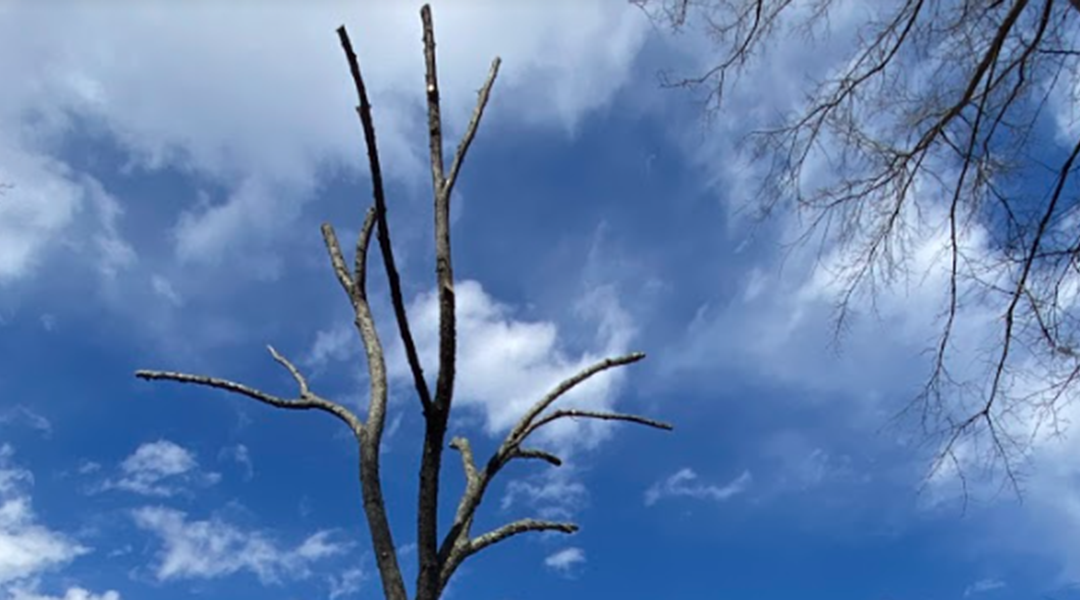Trees are known for being resilient and helping to protect our homes from extreme weather. However, you should remain cautious around trees when a severe thunderstorm occurs. Many homeowners ask, “Why does lightning strike trees?”
This blog will explore more information regarding lightning strikes and trees, factors influencing a tree’s likelihood of getting struck, and what to do afterward. Following a severe lightning storm, you may want to call Columbia’s professional tree services.
Why Are Trees So Vulnerable to Lightning?
While thunderstorms are pretty ordinary, especially during the summer, you need to go inside the moment they happen. Unfortunately, vulnerable trees don’t have the luxury of lifting their roots and taking cover.
Why does lightning strike trees, even in an area with many other things around? Lightning prefers to strike the tallest object in an area. This factor makes lightning striking ground surface less common.
Additionally, lightning likes to travel down a path with very little resistance. Trees contain plenty of moisture, making them prime real estate for lightning strikes. Locations where trees have the most vulnerability include:
- Trees sitting in open spaces
- Trees sitting close to buildings or other structures
- Trees located close to bodies of water
- Trees on mountains or hilltops
- Trees holding electrical lights on their branches
- Trees sitting close to other trees, shrubs, or forests
The taller the tree, the more likely it’ll get struck. While height plays a factor, towering trees prove more prone to stem or root decay. Their tissue and bark are often wetter, resulting in a better conductor.
Nature uses lightning strikes to eliminate sick or dying trees in many ways. But, even if a lightning strike doesn’t kill a tree, it can create the necessary conditions for future issues.
What Happens to a Tree After Getting Struck by Lightning?
The damage dealt to a tree following a lightning strike can range from minor damage to total destruction. Destruction often occurs because when lightning hits a tree, the water inside the tree’s cells heats up, forming steam and expanding the tree’s cells.
These expanding cells will tarnish a tree’s stability, causing it to lean, split, and even in some severe cases, explode.
What Are Some Signs of Lightning Damage?
Sometimes the process of spotting lightning damage is very straightforward. Other times, however, such signs become harder to spot. Examples may include:
- Total destruction to the tree
- Peeling or cracking bark
- Several fallen or damaged branches
It’s important to note that when lightning hits a tall object like a tree, much of this energy transfers throughout the ground. Known as a ground current, lightning will travel along the ground outside the tree, killing small plants and cracking the earth.
Are There Lightning Resistant Trees?
Currently, the planet has at least 73,000 tree species worldwide, and while all are susceptible to lightning strikes, some fare worse. Trees like hemlock, oak, ash, and maple endure lightning strikes more.
On the other hand, birch and beech offer more excellent resistance due to their high amounts of oil. Regardless, following a lightning strike, it’s possible to save a tree with some recovery methods, including:
- Pruning and trimming
- Fertilization
- Spraying the area with insecticides
- Irrigation
Call Volunteer Tree Company Today
Lightning storms wreak havoc on trees and surrounding life, but the right preventative measures can minimize risks. Additionally, it’s possible to save a tree’s life following a lightning strike. Other times, however, you may need to remove the tree from your property.
Our Volunteer Tree Company eagerly awaits to assist and can help determine the best course of action.
Discover why does lightning strike trees and learn more about cutting trees near your house by calling Volunteer Tree Company at (931) 637-5487!


